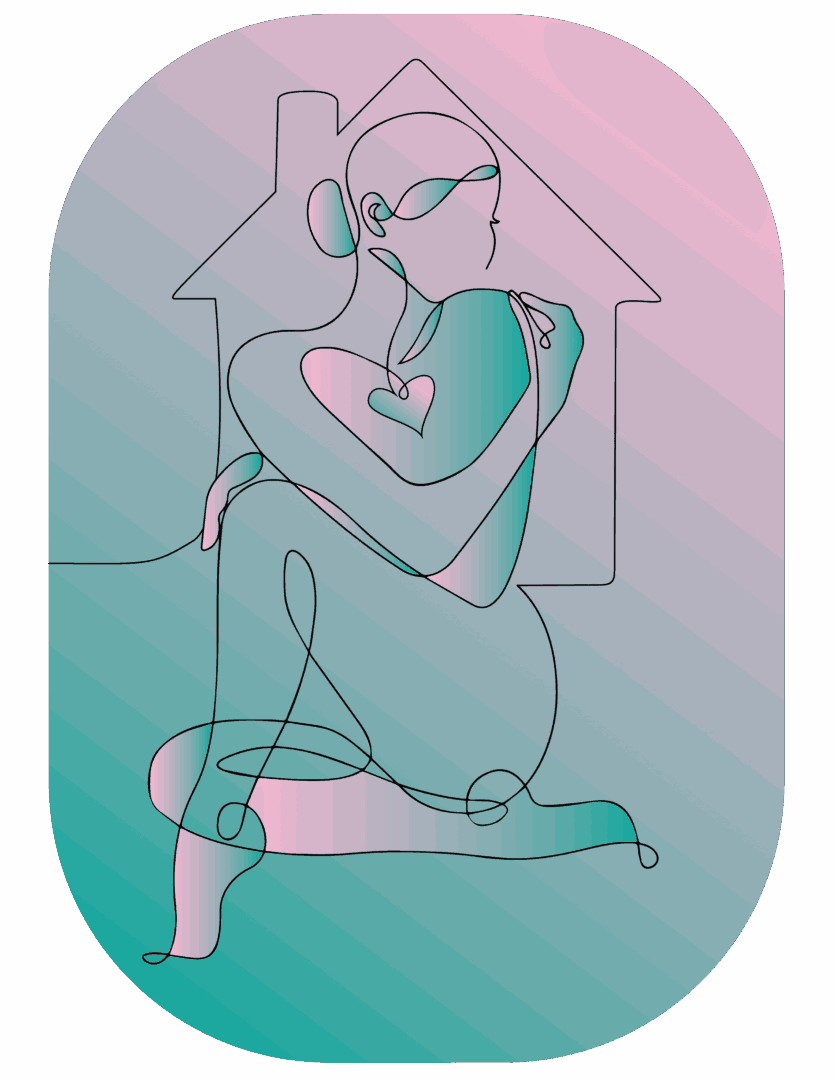We were lucky to catch up with Lauren Garchow recently and have shared our conversation below.
Lauren , thanks for taking the time to share your stories with us today We’d love to hear about the best advice you’ve ever given to a client? (Please note this response is for education/entertainment purposes only and shouldn’t be construed as advice for the reader)
“You can heal from your chronic pain!”
I know what you might be thinking – that’s not exactly advice. And you’re right! In the world of psychotherapy, our primary job isn’t to give advice but to hold space and hope for people, providing them with the tools to navigate life challenges in a healthy way. As a therapist and mind-body coach, these seven words are monumental for the individuals who seek my services. This is not something that I have told just one client, but nearly every client I see.
Many of the clients that come to my practice have been to numerous doctors and physical therapists, tried countless medications, and even seen other psychotherapists, only to be left feeling hopeless about their chronic pain. I’ve had clients recount experiences where doctors have said things like, “Your life will never be the same; just live with it,” or “You need to get out of bed at a precise angle every day for the rest of your life to avoid hurting your back,” and even, “You need to sit in a dark place alone to heal your skin pain” (what??).
While mostly well-intentioned, these practitioners can create a lot of unnecessary fear and hypervigilance around someone’s pain, which in turn fuels its persistence and can contribute to it becoming chronic. Hearing the seven words, “You can heal from your chronic pain,” is a life-changing, overwhelming, and hopeful experience for many people. For some, it can feel off-putting or even offensive to suggest that their pain can be healed through a mind-body approach. For many others, it feels intriguing, yet they remain skeptical. All these reactions are completely normal. Cycling through all these reactions in the span of five minutes is normal!
The field of pain science and the mind-body approach to chronic pain and symptoms has been around for some time but is gaining more recognition in dominant medical and mental health spaces recently. It’s important to note that certain cultures have believed in the mind-body connection long before it became manualized. Focusing on this connection to heal chronic pain means addressing people’s uncomfortable symptoms holistically, by targeting the root causes of their pain. After initially hearing about the possibility of healing, it’s rare for the journey to be linear. Each person’s story and nervous system are unique, and their timelines differ. That’s why it’s crucial for me, as the therapist and coach, to hold onto the hope contained in those words until my clients can embrace it themselves.
“You. Can. Heal. From. Your. Chronic. Pain.”
The magic that happens when people grasp onto the hope of living a life different from the one they are currently experiencing is electrifying. It is at this point that they can learn new ways of relating to themselves, practice healthy tools to lower their fear levels, and ultimately, get rid of or significantly reduce their pain.

Great, appreciate you sharing that with us. Before we ask you to share more of your insights, can you take a moment to introduce yourself and how you got to where you are today to our readers.
Remember those things I mentioned earlier that doctors have told my clients? Well, I’ve heard them too! In my early 20s, I was diagnosed with a bulging/slipped disc in my back, among several other issues. At different points, I couldn’t drive (my roommate had to take me places), I couldn’t sit in classes (I stood through 3-hour lectures), and I couldn’t exercise (I had to quit the dance team). In many ways, my life felt like it was over. This chronic back pain and its impact on my life lasted for about four years. I tried physical therapists, doctors, holistic practitioners, massage therapists, shots – you name it, I tried it.
When I first encountered the concept of healing through a mind-body method (from the practices of Alan Gordon, now called Pain Reprocessing Therapy), I read the info sheet once and thought, “No way does this have to do with my mental health.” So, I buried the piece of paper and never looked at it again. As I mentioned earlier, this is a common reaction to hearing about this approach! It wasn’t until years later, with little lasting relief and feeling like I had nothing left to lose, that I became open to the idea.
Neuroplastic pain is a type of chronic pain caused by neural circuits in the brain, rather than structural issues. In other words, your brain misinterprets safe sensations as dangerous. The parts of our brain responsible for signaling danger go off when they don’t need to. Sometimes, an original injury has healed, but the pain persists. Other times, there was no initial physical injury, but your mind sensed danger (emotional danger is a good example) and started ringing the alarm bells in the form of chronic pain. Studies are finding that it is actually more common than not for chronic pain to be neuroplastic in nature.
I want to emphasize here that pain, regardless of its source, is very real. It is not “all in your head.” Additionally, other symptoms in your body can be neuroplastic, not just pain. Symptoms such as fatigue, dizziness, long COVID, migraines, and more can be neuroplastic. There are several indicators to determine if someone’s pain is neuroplastic, and many free resources online can help with this, which are included on the resource page of my website. To gain further clarity and confidence, one can rule out a structural cause by seeing a doctor, preferably one knowledgeable about neuroplastic symptoms.
That was a lot of technical stuff – back to my story! Are you still with me? After I overcame my back pain through Pain Reprocessing Therapy, I recognized that I had several other neuroplastic symptoms throughout my life. I wasn’t as aware of my emotions or the harsh way I related to myself as I am now, and my body was constantly alerting me to pay attention to my inner world. My healing journey not only eliminated my back pain but also became a huge lifestyle change. After being told I would be so limited, being able to live the life I had before (but better!) felt miraculous.
This is why I started Lauren G Therapy. My mission is to help women feel at home in their bodies. We have countless reasons to feel disconnected from ourselves and we’ve been conditioned to prioritize others over ourselves. In my practice, I support women, as well as people of all gender expressions, in learning to embrace all sensations and emotions in their bodies with curiosity and compassion, as well as to prioritize their unique needs. I am a work in progress myself, and I approach my sessions as a human who can relate to what my clients are experiencing.

Learning and unlearning are both critical parts of growth – can you share a story of a time when you had to unlearn a lesson?
Oo, there are so many lessons I’ve had to unlearn. Before my healing journey, I was my own biggest bully – and I don’t think I realized the gravity of this until I started treating my pain from a mind-body approach. Lowering the pressure and intensity I put on myself is one of the primary lessons that helped me overcome my chronic pain.
We’ve all heard phrases like, “You should be grateful because Johnny has it worse than you,” or, “You have food on the table. There are so many people without food, you shouldn’t be upset about something so small.” While perspective-taking and gratitude can be important tools for improving mental health, skipping to these without recognizing, feeling, or validating your own emotions can cause serious harm. What most people don’t realize is that this invalidation can be a significant factor in causing prolonged physical pain and discomfort too. As someone who cares deeply for people and the world at large, I was neglecting to truly care for myself. When I took a good look at my internal monologue, it was HARSH the majority of the time.
One of the most exciting concepts in neuroscience to me is “neuroplasticity.” Neuroplasticity is the brain’s ability to create new synaptic connections – essentially, how the brain changes and adapts. With practice, safety, and connection, we can form new neural pathways. When I began unlearning my self-criticism and self-bullying, I discovered that it takes about 10,000 repetitions to build a new neural pathway, although this can vary greatly depending on many factors. The key point here is that we CAN change! Rewiring our brains is not always easy, but it is possible. The neural pathways of pressure and intensity are still present, but each day I get to choose how I will relate to myself. Each time I choose compassion, I am strengthening that neural pathway and nurturing healthier habits.

Other than training/knowledge, what do you think is most helpful for succeeding in your field?
Finding balance – and being okay with your balance looking different than others’. We take on a lot in this field: a lot of pain, a lot of energy, a lot of emotions, and at times, a lot of pressure. The job is rewarding, and there are, of course, plenty of joyful moments in this work. For me, though, it is crucial to define and practice what joy and “play” look like in my personal life – separate from being in a helping role. One challenge I’ve faced, and found some of my therapist friends face as well, is comparing ourselves to other therapists and coaches. For example, how many sessions feel doable each week can look very different for different therapists. I listen to my body to guide me in what feels sustainable for me.
To succeed in this career while maintaining your own mental health and identity is vital for preventing burnout. Embracing your unique balance not only helps you thrive personally, but also results in you doing your job better. In the end, it’s about being authentically present for your clients while also nurturing and honoring yourself. There are plenty of creative ways I see therapists and coaches utilizing their skills to help others beyond the traditional 50-minute individual sessions as well. Whatever balance looks like for you, lean into it. This is key to creating a fulfilling and sustainable career in this field.
Contact Info:
- Website: https://www.laurengtherapy.com
- Linkedin: https://www.linkedin.com/in/lauren-garchow-lcsw-bb965aa6/

Image Credits
Chris Okimoto


